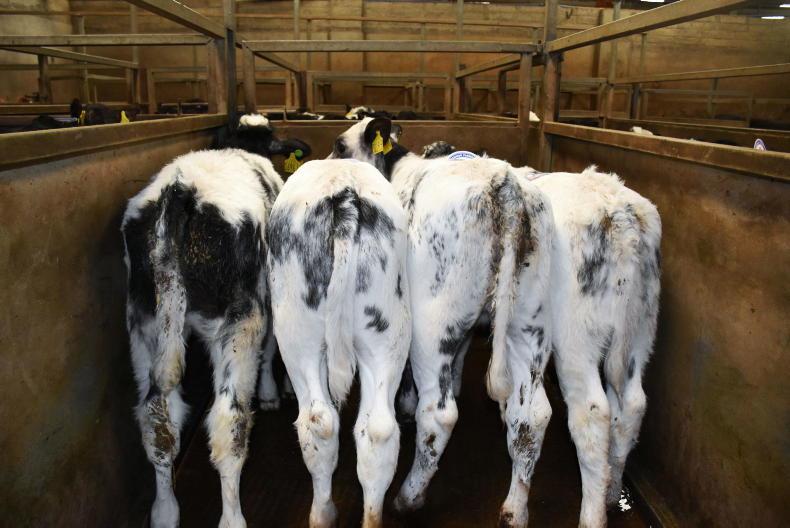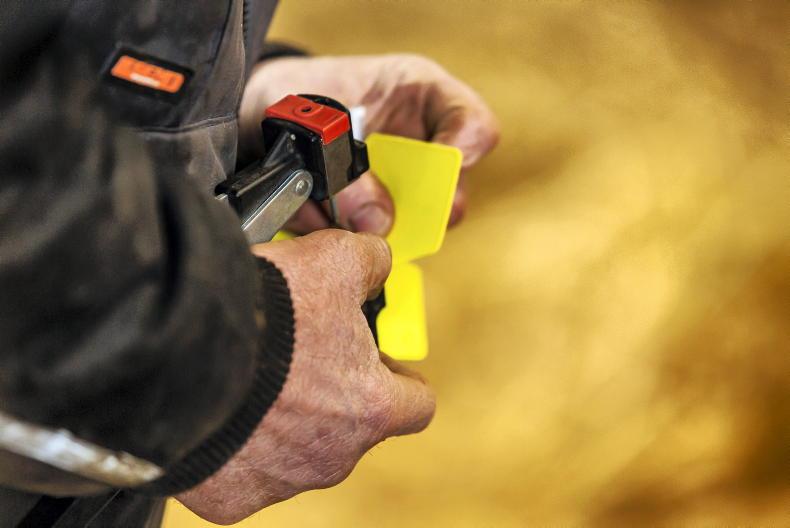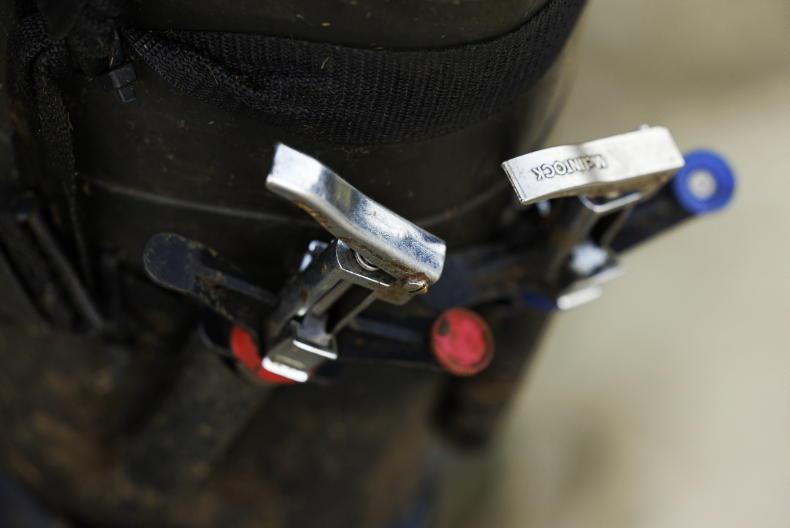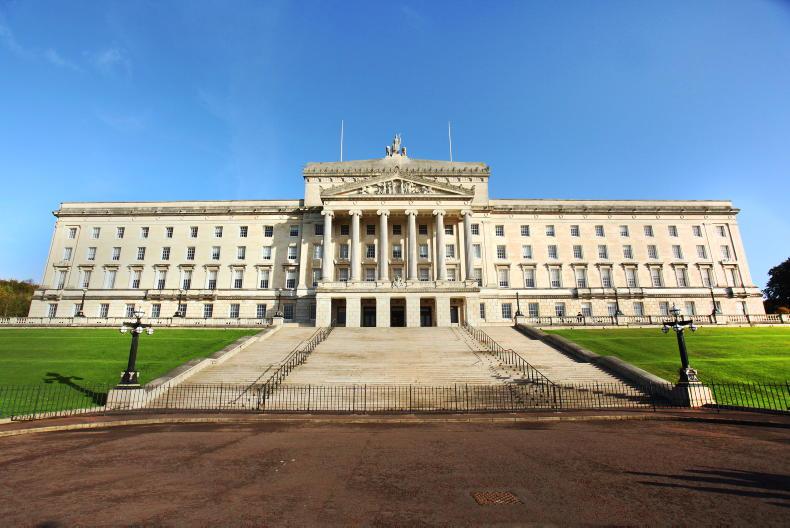A targeted badger cull in high-incidence bovine TB areas is not a “free-for-all” and the aim is not to eradicate all badgers, DAERA vet Raymond Kirke told farmers at the TB Eradication Partnership (TBEP) information meeting in Enniskillen on Monday night.
He said the proposed cull will mimic the successful model in England, and will be undertaken by trained operators paid for by a farmer-led company.
It will be up to DAERA to define each cull zone and monitor all aspects of the work.
Population reduction
The overall aim is to achieve a badger population reduction in the area of 70-95%, which will act to reduce disease pressure coming from wildlife.
A cull will be done each autumn (1 September to 30 November) across a four-year period, followed up by vaccination of remaining badgers.
“Numbers can rebound in three to 10 years. The aim is to bring the disease in badgers under control and keep it under control by vaccination,” said Kirke.
He said the cull areas identified will be where the Department believes it can do “most good”, and will typically have a sustained high incidence of bovine TB, a higher than average badger population and some natural boundaries such as a major road or river.
Each area will be 100km2 (approximately 25,000 acres) or more in size. Initial analysis has shown that a 100km2 area normally has around 60-70km2 of agricultural land, with 100 to 200 cattle herds, 12,000 to 15,000 cattle and 250 to 450 badgers.
Farmer buy-in
Local farmer buy-in to a cull is vital if it is to be effective. “We must secure 90% land access – it won’t work if you don’t get the land access,” said Kirke.
Culling will be undertaken by trained and highly skilled operators, using high-powered rifles, complemented by cage trapping using bait (peanuts) in some situations.
The plan is to undertake operator training in the spring, while also getting badger sett surveys done across at least 80% of the land.
AHWNI to facilitate collection
of funds
The board of Animal Health and Welfare NI (AHWNI) has agreed the organisation will act as a facilitator to collect and disperse funds relating to a targeted badger cull in NI, AHWNI chief executive Dr Sam Strain confirmed at the meeting on Monday.
In NI, the plan is to set up one company, although just exactly how this will operate is still to be worked out.
“How the money gets handled – there is work to be done to ensure it is collected and used appropriately. We are getting legal and financial advice around this,” confirmed Strain.
Funding for the company will come from levies on milk (0.02p/l) and beef (£1/head) delivered to processors, which is expected to bring in around £1m per year. It will not be a statutory levy, so potentially farmers will be able to opt out, but it is hoped that any opt-out rates would be very low. The levies could be in place by the start of 2023.
It was put to UFU president David Brown that farmers who only sell in marts will not have to contribute to the costs of the cull.
“We need to lift £1m and need a simple way to do it. It is not perfect, but we believe it will work,” he said, also pointing out the cost to farmers in cull areas of England are significantly more, and often run into thousands of pounds.
UFU still opposed to compensation cuts
In its 2021 consultation, DAERA again proposed cuts to compensation payments for TB reactor cattle.
Any changes are yet to occur, with Agriculture Minister Edwin Poots confirming in March 2022 that the policy will be reviewed in two years’ time following the implementation of the new TB eradication strategy.
Despite that, UFU president David Brown remains firmly opposed to any reductions in stock valuation.
“We have fought tooth and nail against compensation or stock valuation cuts – under no circumstances should they come in,” he said on Monday.
Also commenting, DAERA policy director Neil Gartland confirmed there will be no change to the compensation regime without the agreement of a minister.
Current TB test is the best available
The current skin test to detect bovine TB is not perfect as it tends to leave behind some infected animals, but other tests also have significant limitations, AHWNI CEO Dr Sam Strain explained on Monday.
Answering a question about whether large beef finishing units could be exempted from testing, and instead solely rely on abattoir surveillance, Strain, also a member of TBEP, pointed out that all tests (including in abattoirs) have limitations.
One option would be to stop inserting avian TB at a test, but he said this would lead to a lot of false positives due to bird TB or Johne’s disease. “It is just not feasible,” he said.
The same applies to the gamma interferon blood test, which is more sensitive than the skin test, but produces more false positives. New tests are being trialled which test for TB in milk, blood or faeces, but “we would need to see evidence that it works”, said Strain.
He said if skin testing is part of a wider control programme to include the likes of improved farm biosecurity, it can lead to disease eradication. “We are stuck with the test we have got. There is no silver bullet,” he argued.
Control herds
One potential solution for large beef finishing units is to become an Alternative Control Herd (ACH) although strict rules apply, including around biosecurity in the yard, with no cattle allowed to graze.
“Discussions on this are ongoing with the Department. The key issue is that it doesn’t become a nucleus herd of spread to neighbours,” said TBEP member and Co Down dairy farmer David Rea.
Read more
Farmer groups opposed to UFU TB levy
Farmers must step forward on bovine TB
A targeted badger cull in high-incidence bovine TB areas is not a “free-for-all” and the aim is not to eradicate all badgers, DAERA vet Raymond Kirke told farmers at the TB Eradication Partnership (TBEP) information meeting in Enniskillen on Monday night.
He said the proposed cull will mimic the successful model in England, and will be undertaken by trained operators paid for by a farmer-led company.
It will be up to DAERA to define each cull zone and monitor all aspects of the work.
Population reduction
The overall aim is to achieve a badger population reduction in the area of 70-95%, which will act to reduce disease pressure coming from wildlife.
A cull will be done each autumn (1 September to 30 November) across a four-year period, followed up by vaccination of remaining badgers.
“Numbers can rebound in three to 10 years. The aim is to bring the disease in badgers under control and keep it under control by vaccination,” said Kirke.
He said the cull areas identified will be where the Department believes it can do “most good”, and will typically have a sustained high incidence of bovine TB, a higher than average badger population and some natural boundaries such as a major road or river.
Each area will be 100km2 (approximately 25,000 acres) or more in size. Initial analysis has shown that a 100km2 area normally has around 60-70km2 of agricultural land, with 100 to 200 cattle herds, 12,000 to 15,000 cattle and 250 to 450 badgers.
Farmer buy-in
Local farmer buy-in to a cull is vital if it is to be effective. “We must secure 90% land access – it won’t work if you don’t get the land access,” said Kirke.
Culling will be undertaken by trained and highly skilled operators, using high-powered rifles, complemented by cage trapping using bait (peanuts) in some situations.
The plan is to undertake operator training in the spring, while also getting badger sett surveys done across at least 80% of the land.
AHWNI to facilitate collection
of funds
The board of Animal Health and Welfare NI (AHWNI) has agreed the organisation will act as a facilitator to collect and disperse funds relating to a targeted badger cull in NI, AHWNI chief executive Dr Sam Strain confirmed at the meeting on Monday.
In NI, the plan is to set up one company, although just exactly how this will operate is still to be worked out.
“How the money gets handled – there is work to be done to ensure it is collected and used appropriately. We are getting legal and financial advice around this,” confirmed Strain.
Funding for the company will come from levies on milk (0.02p/l) and beef (£1/head) delivered to processors, which is expected to bring in around £1m per year. It will not be a statutory levy, so potentially farmers will be able to opt out, but it is hoped that any opt-out rates would be very low. The levies could be in place by the start of 2023.
It was put to UFU president David Brown that farmers who only sell in marts will not have to contribute to the costs of the cull.
“We need to lift £1m and need a simple way to do it. It is not perfect, but we believe it will work,” he said, also pointing out the cost to farmers in cull areas of England are significantly more, and often run into thousands of pounds.
UFU still opposed to compensation cuts
In its 2021 consultation, DAERA again proposed cuts to compensation payments for TB reactor cattle.
Any changes are yet to occur, with Agriculture Minister Edwin Poots confirming in March 2022 that the policy will be reviewed in two years’ time following the implementation of the new TB eradication strategy.
Despite that, UFU president David Brown remains firmly opposed to any reductions in stock valuation.
“We have fought tooth and nail against compensation or stock valuation cuts – under no circumstances should they come in,” he said on Monday.
Also commenting, DAERA policy director Neil Gartland confirmed there will be no change to the compensation regime without the agreement of a minister.
Current TB test is the best available
The current skin test to detect bovine TB is not perfect as it tends to leave behind some infected animals, but other tests also have significant limitations, AHWNI CEO Dr Sam Strain explained on Monday.
Answering a question about whether large beef finishing units could be exempted from testing, and instead solely rely on abattoir surveillance, Strain, also a member of TBEP, pointed out that all tests (including in abattoirs) have limitations.
One option would be to stop inserting avian TB at a test, but he said this would lead to a lot of false positives due to bird TB or Johne’s disease. “It is just not feasible,” he said.
The same applies to the gamma interferon blood test, which is more sensitive than the skin test, but produces more false positives. New tests are being trialled which test for TB in milk, blood or faeces, but “we would need to see evidence that it works”, said Strain.
He said if skin testing is part of a wider control programme to include the likes of improved farm biosecurity, it can lead to disease eradication. “We are stuck with the test we have got. There is no silver bullet,” he argued.
Control herds
One potential solution for large beef finishing units is to become an Alternative Control Herd (ACH) although strict rules apply, including around biosecurity in the yard, with no cattle allowed to graze.
“Discussions on this are ongoing with the Department. The key issue is that it doesn’t become a nucleus herd of spread to neighbours,” said TBEP member and Co Down dairy farmer David Rea.
Read more
Farmer groups opposed to UFU TB levy
Farmers must step forward on bovine TB










SHARING OPTIONS